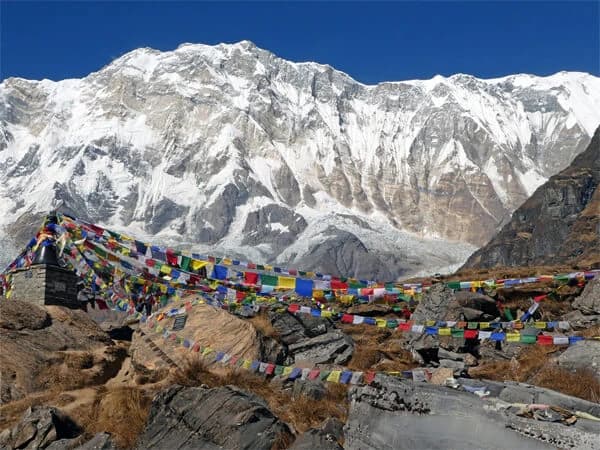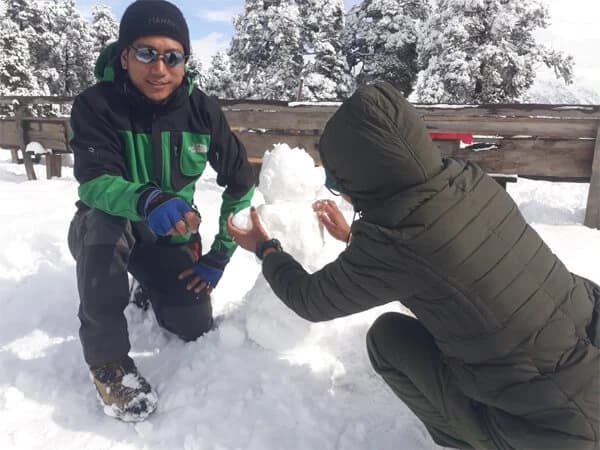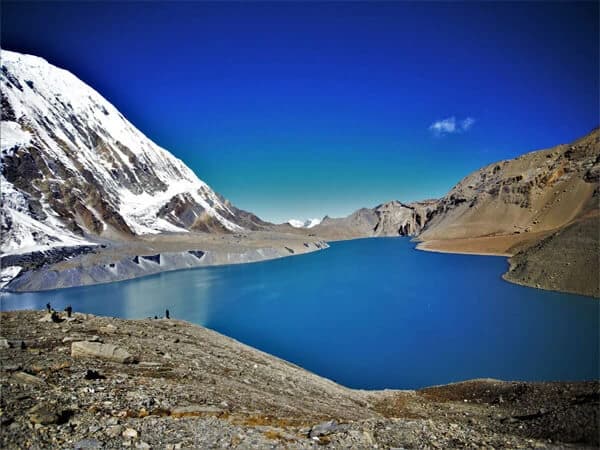Experienc on the stunning Everest Gokyo lake Trek a unique himalaya adventure in Nepal Everest Region. Traverse the serene glacial lake or gokyo lake valley and experience and discover a refreshing twist on classic Gokyo Lake Trek. This Trek is connect with the iconic Nepal Mount Everest Base Camp Trekking. Nepal Trekking Routes design a distinct journey for those seeking different Himalayan Experienc.
You get to see the aerial view of the snow-capped mountains from the Manaslu (8,163 m) region to the Solukhumbu region. The Sherpa culture and tradition including ancient monasteries, chortens, and mane walls are seen during this trek.
The diverse flora and fauna of Sagarmatha National Park add to the charm of Nepal trekking. It is one of the highest-placed conservation areas in the world. The UNESCO World Heritage List has enlisted this site under natural site.
You can see the Himalayan animals like musk deer, red panda, etc. while walking along the rugged trails. The pine, oak, and rhododendron forests of this region are the assets to promote Nepalese tourism.
The wonderful biodiversity always calls the national and international tourists at all times of the year. If you make Gokyo Lake trek in spring, the entire national park is embellished by colorful rhododendron flowers.
Namche Bazaar acclimatization day is quite an important moment in the trekkers’ lives. You get to hike to Everest View Hotel (3,880 m), the world’s highest-placed hotel. Likewise, the Sherpa Museum is another beauty of this rest day.
Gokyo Ri (5,357 m) is the best vantage point for trekking in the Everest region. From the top of the peak, you can have the breathtaking vistas of the snowy peaks including the Great Himalayas trails.
Mt. Everest (8,848 m), Mt. Lhotse (8,516 m), Mt. Makalu (8,481 m), and Mt. Cho Oyu (8,188 m) are seen from the top of Gokyo Ri. Other prominent peaks like Mt. Ama Dablam, Mt. Pumori, Mt. Nuptse, etc. also come into your sight.
How to reach Gokyo Lake
Gokyo Ri Trek route traverses along three valleys of the world’s highest peak region. They are the Dudh Koshi River Valley, Chhukung Valley, and Gokyo Lakes Valley. Gokyo Valley is the prime location for this trekking in Nepal.
Trekking to Gokyo Lake begins from Lukla, Tenzing Hillary Airport. It is also called the gateway to Everest Base Camp trek. All the variants of Everest region trekking start right from this Himalayan Sherpa town.
Moving along the Dudh Koshi Valley, you reach Phakding and Namche Bazaar. Namche Bazaar is called the Sherpa Capital as it is the main trading center of the Khumbu region. You spend a spare day over here to adjust to the high altitude.
You follow the trail of Gokyo Lake Cho La Pass trek right from Mong La Pass (3,610 m). Going past Dole and Machhermo villages of Gokyo Valley, you enter into Gokyo Valley. Although some sections of the trail are challenging, the scenery you see keeps on pushing you further.
Exploring the group of six glacial lakes called Gokyo Lakes and climbing Gokyo Ri, you begin the retreat journey. As it takes shorter to cover the downhill trail, you arrive at Lukla. Finally, you fly back to Kathmandu enjoying the astounding view of the Himalayas, green forests, and lush valleys.
We also organize a Gokyo Lake trek 10-day itinerary as well. You can do this trek within 10 days as well. But, the difficulty level rises a little as you have to walk a few hours more every day.
Trek to Gokyo Ri Difficulty
There are a few factors that determine the difficulty of trekking in Nepal. The altitude you gain, the trails, trekking duration, and acclimatization days are some of them. Talking about Gokyo Lake Trek's difficulty, it is a moderately challenging trek.
As soon as you reach a place above 2,500 m, Acute Mountain Sickness (AMS) is possible. The trails and stops of Gokyo Lake Trekking Tour are all above 2,500 m. Therefore, you must be careful to avoid such health challenges.
Drinking enough water, having hygienic food items, and walking slowly are the top measures to minimize the risk of AMS. In addition to these, you should take enough rest while walking in the higher altitude.
Keeping a first aid kit box is important in keeping your mental strength high. And as soon as you feel uneasy, you need to tell it to the team leader. The common symptoms of AMS are shortness of breath, exhaustion, or dehydration.
The next factor responsible for the Gokyo Lake Trek difficulty is the trekking duration. You have to walk at least 5 hours along the rugged trails. Whether you climb up or down through the steep rocky trails, it is always challenging.
However, as there are two days separate for acclimatization, the challenge can be minimized. You have a rest day at Namche Bazaar, which helps you get adjusted in the climate of more than 3,000 m.
Finally, you have Gokyo Valley acclimatization day as the second chance. This rest day enables you to cope with an altitude above 4,000 m. Therefore, the next day you can have an ultimate Gokyo Lake Trek experience by climbing Gokyo Ri. It offers lifelong memory of the breathtaking vistas of the Himalayas.
Gokyo Lake Trekking Permits
The Gokyo Lake trek is the most scenic trekking package of the Everest region trek. As there is not any restricted area, Free Individual Trekking (FIT) is allowed here. Even solo trekking Gokyo Lake is possible, if you are well prepared.
Gokyo Lake Trek for beginners can be quite challenging. But we highly recommend you hire a professional guide and porter for this trek. Although the guide cost is a little higher, you won’t have to worry about anything. In case of AMS or missing the right trekking trails, they can help you.
You can make Gokyo ri Trek by carrying the specified permits issued by the respective authorities. You need only two trekking permits for this amazing trekking package. A TIMS Card and Sagarmatha National Park Entry Permit are required for this.
If you book an organized trek to Gokyo RI, you have to pay only USD 10 for the TIMS Card. It is managed by the local tour operator you book the package with. And for a solo trekker to Gokyo Lake, they have to pay USD 20 per person.
Sagarmatha National Park Entry Permit cost is USD 30 per person. This permit can be obtained from the Nepal Tourism Board, Bhrikutimandap, Kathmandu. Or, you can also get it from Monjo near Namche Bazaar as well.
Variation of Gokyo Lake Trek
Gokyo Lakes and Everest View Trek offer unforgettable memories in the Himalayas. You will witness serene glacial lakes and the iconic Everest view from Gokyo Ri.
Gokyo Lakes Trek vs Everest Base Camp
Gokyo Lakes Trek is a less crowded alternative to Everest Base Camp Trek. The stunning beauty of lakes and the panoramic views from Gokyo Ri are unique. One the other hand, Everest Base Camp Trek is a thrilling journey to the base of the world’s highest mountain.
Gokyo Lakes Trek vs Annapurna Circuit
Gokyo Lakes Trek is shorter than Annapurna Circuit. You can explore Everest region during Gokyo Lakes trek whereas Annapurna circuit offers diverse experience through Thorong La Pass.

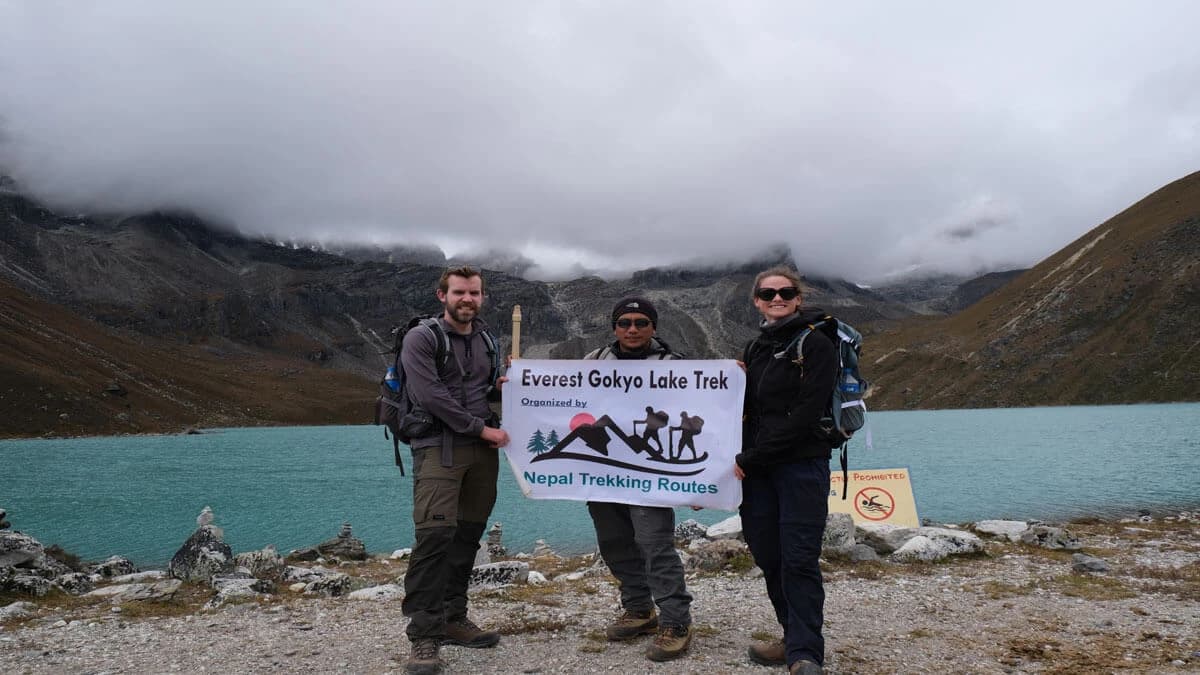
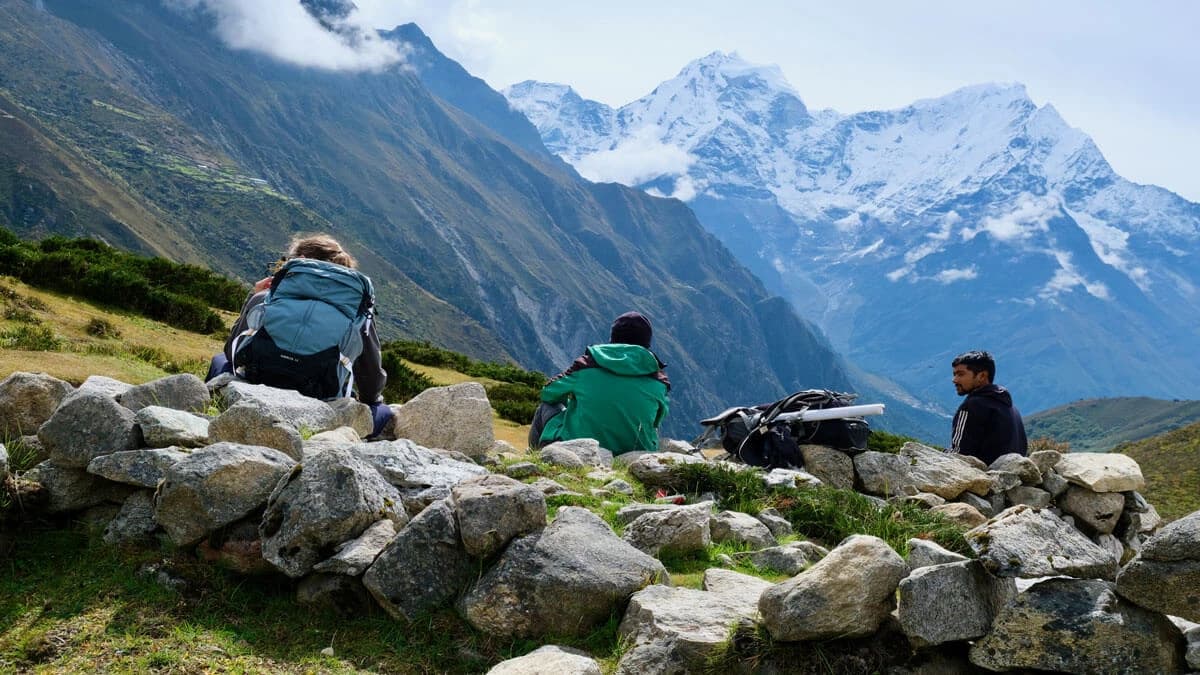
.webp&w=3840&q=75&dpl=dpl_4U3CaZUV3Y5iKdBNPJmVMATJy3AB)
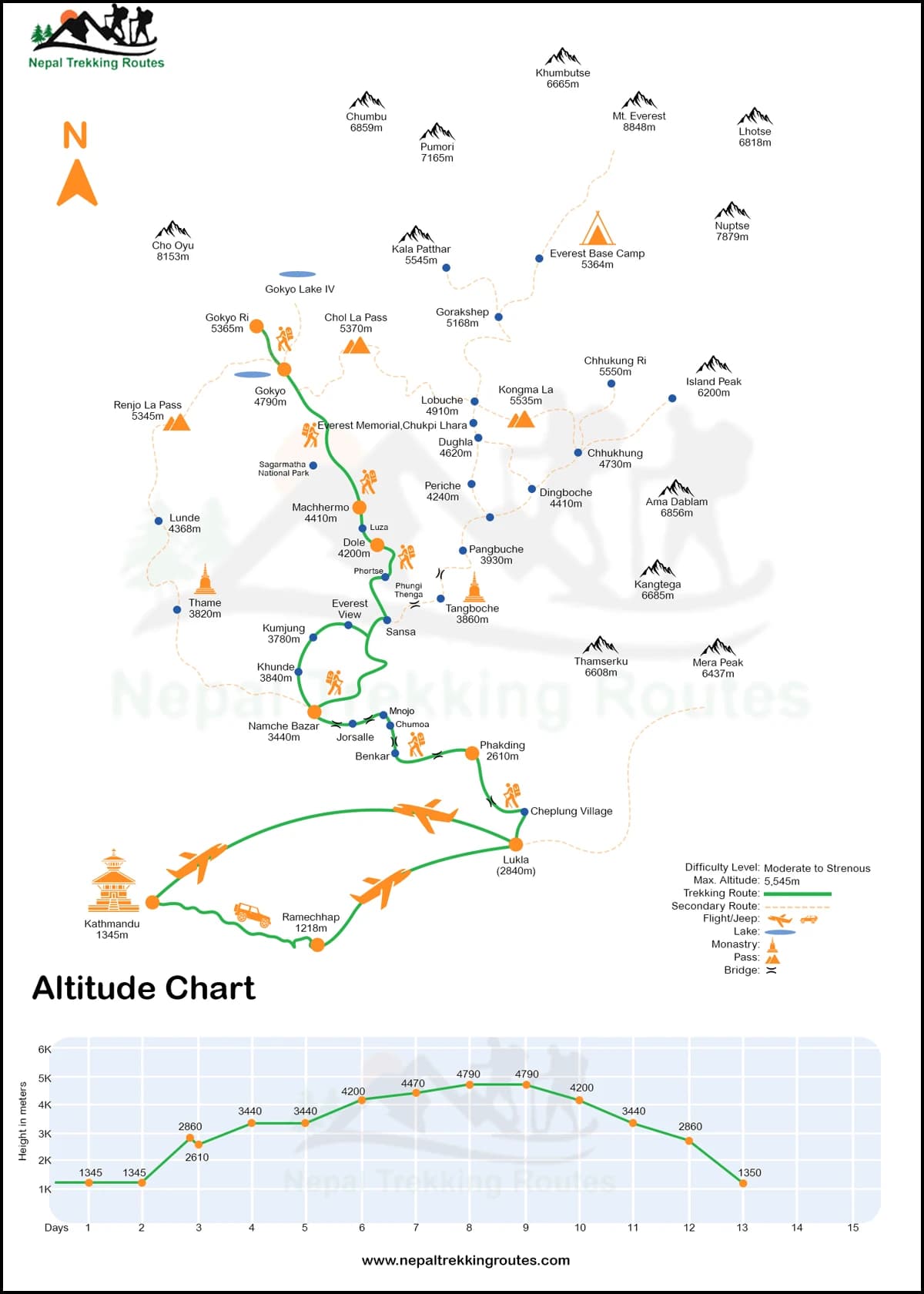
.webp&w=640&q=75&dpl=dpl_4U3CaZUV3Y5iKdBNPJmVMATJy3AB)
